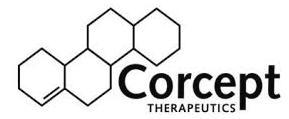News Articles February 2022
Written on 04 February 2022.
Diabetes (Diabetes Insipidus)
A problem with water balance in the body causing excess urine production and great thirst, due to pituitaryhypothalamic damage. Diabetes mellitus, which has the same symptoms, is due to insufficient insulin production by the pancreas.
Diabetes Insipidus symptoms include excessive urination, thirst, and increased intake of water.
Diabetes (Diabetes Mellitus)
A metabolic disease in which carbohydrate utilization is reduced and that of lipid and protein enhanced; it is caused by an absolute or relative deficiency of insulin and is characterized, in more severe cases, by chronic hyperglycemia, glycosuria, water and electrolyte loss, ketoacidosis, and coma; long-term complications include development of disorders of the nervous system, eyes and kidneys; generalized degenerative changes in large and small blood vessels, and increased susceptibility to infection.
Two types of a highly variable disorder in which abnormalities in the ability to make and/or use the hormone insulin interfere with the process of turning dietary carbohydrates into glucose, the body’s fuel. Type I is known as insulin dependent diabetes mellitus, and type II is known as non-insulin dependent diabetes mellitus.
Dietitian
An expert in the practical application of diet in the prevention of disease or of a process that can lead to disease, and in the treatment of disease.
Plan and conduct food-service or nutritional programs to assist in the promotion of health and disease control. May supervise activities of a department providing large-quantity food services, counsel individuals, or conduct nutritional research.
Differentiate
The process cells undergo as they mature into normal cells.
Differentiated cells have distinctive characteristics, perform specific functions, and are less likely to divide. See dedifferentiate, undifferentiated.
Diffuse
Lacking a distinct border, not localized, spread out. Opposite of circumscribed.
Widely spread; not localized or confined. Example: Cancer treatment depends on whether the tumor is diffuse (spread throughout the brain) or focal (in one area of the brain).
Diplopia
Double vision.
Diplopia is a vision disorder in which two images of a single object are seen, caused from unequal action of the eye muscles.
Dopamine Agonists
Medications with predominant effects on pituitary cells that harbor receptors for the chemical transmitter dopamine.
Examples include Bromocriptine and Cabergoline.
Doppler Ultrasonography
An application of diagnostic ultrasound used to detect moving blood cells or other moving structures and measure their direction and speed of movement. The Doppler effect is used to evaluate movement by measuring changes in frequency of the echoes reflected from moving structures.
The Doppler effect is used to evaluate movement by measuring changes in frequency of the echoes reflected from moving structures. In many instances, Doppler ultrasound has replaced x-ray methods such as angiography, as a method to evaluate blood vessels and blood flow. Doppler ultrasound permits real-time viewing of blood flow that cannot be obtained by other methods. Doppler ultrasound has proved a boon in all areas of ultrasound, aiding in the evaluation of the major arteries and veins of the body, the heart, and in obstetrics for fetal monitoring.
Edema
An accumulation of an excessive amount of watery fluid in cells, tissues, or serous cavities (swelling).
Edema means swelling by an excessive amount of watery fluid accumulated in the intercellular spaces, most commonly present in subcutaneous tissue. It usually occurs in the feet, ankles and legs, but it can involve the entire body.
Edema may be brought on by eating too much salt, sunburn, heart failure, kidney disease, cirrhosis of the liver, pregnancy, lymph node disorder, medicines, exercise in warm temperatures. Diuretics may be given as medication for edema.
ELISA
Enzyme-linked immunosorbent assay.
ELISA stands for enzyme-linked immunosorbent assay. It is a commonly used laboratory method to detect antibodies in the blood as a result of being exposed to viruses or other infectious substances.
Available Now!

The Pituitary Patient Resource Guide Sixth Edition is now available! Be one of the first to have the most up-to-date information. The Pituitary Patient Resource Guide a one of a kind publication intended as an invaluable source of information not only for patients but also their families, physicians, and all health care providers. It contains information on symptoms, proper testing, how to get a diagnosis, and the treatment options that are available. It also includes Pituitary Network Association's patient resource listings for expert medical care.

Xeris Pharmaceuticals is valued member of the PNA










